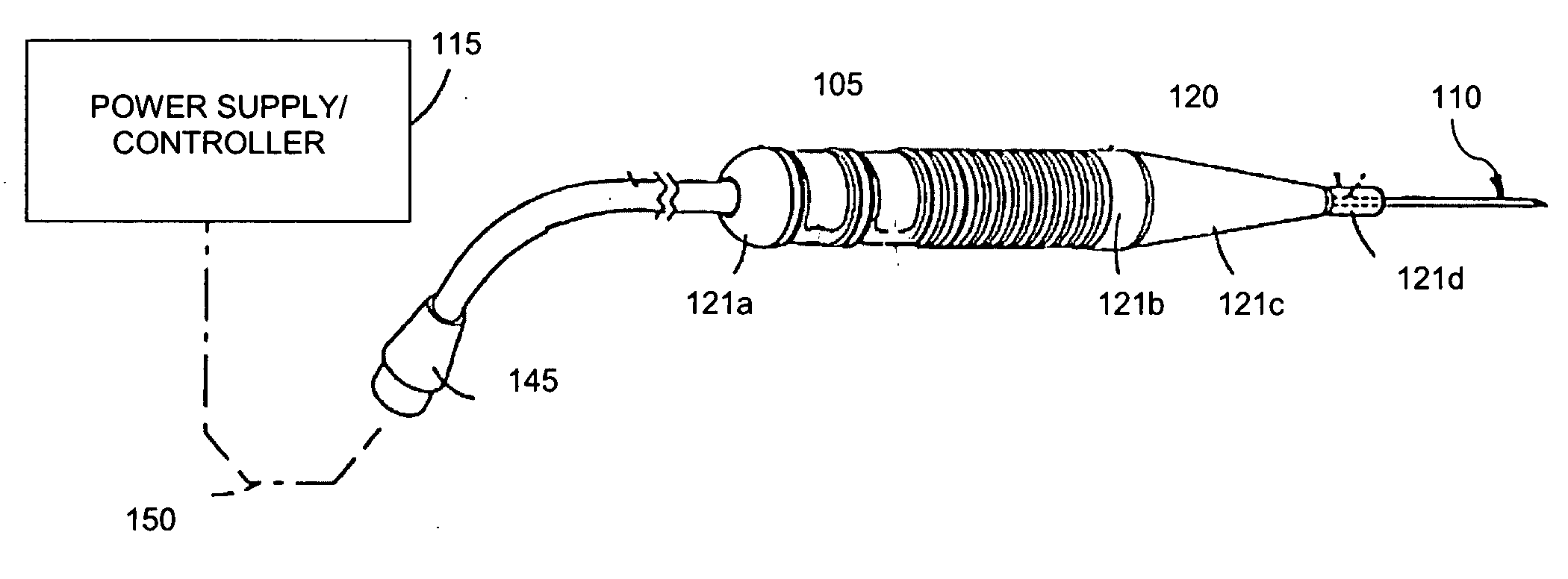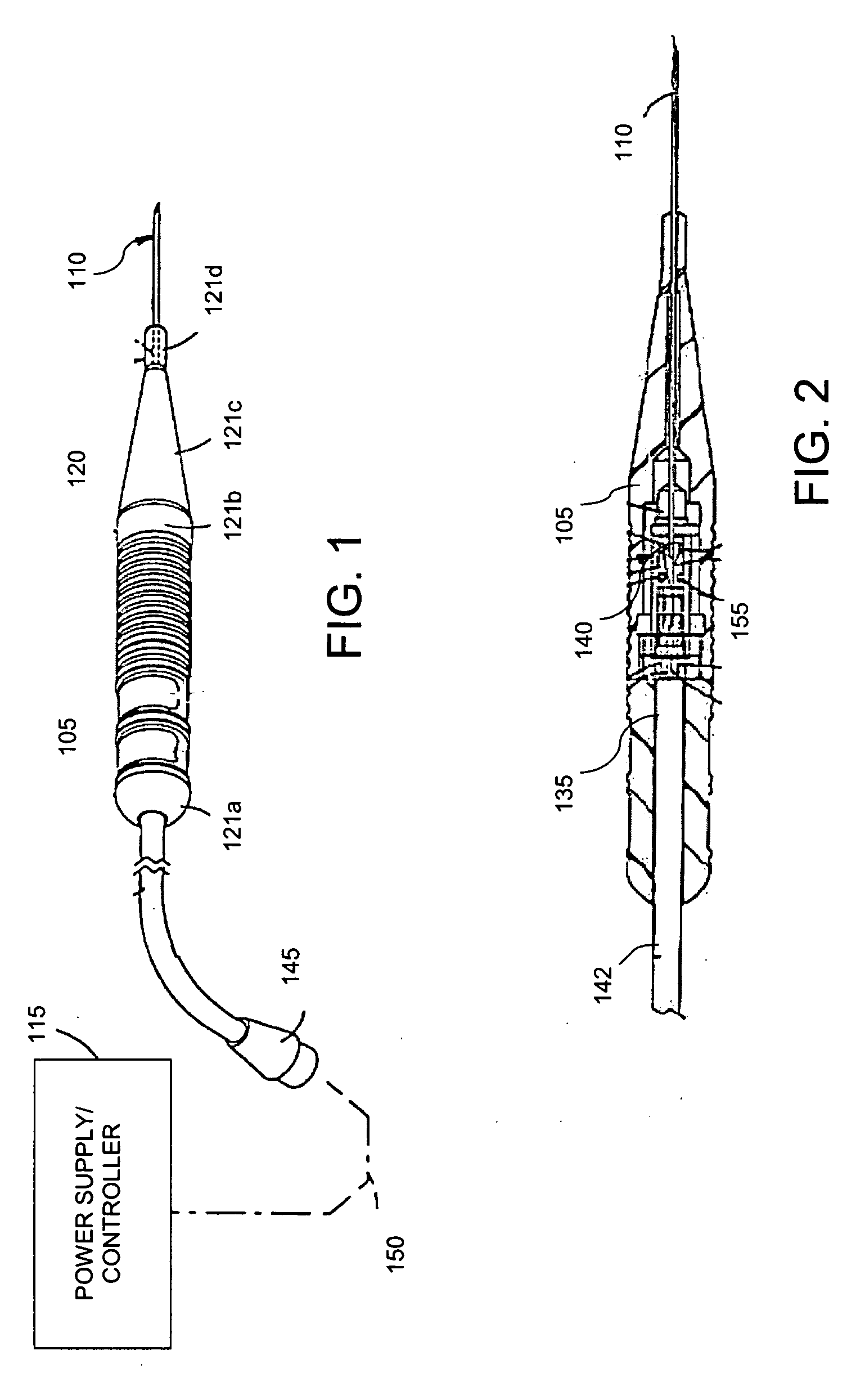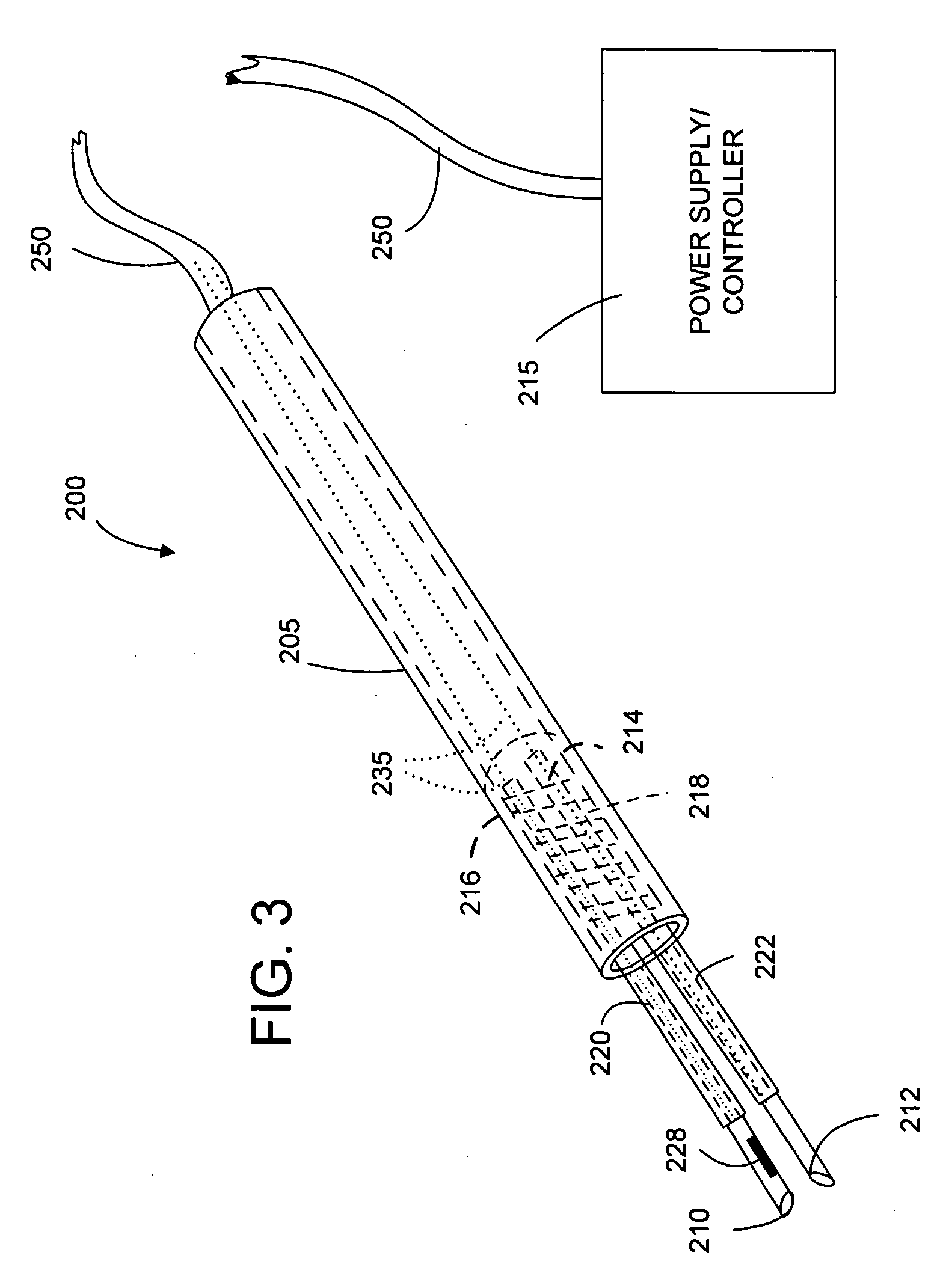Method and device for less invasive surgical procedures on animals
a surgical procedure and less invasive technology, applied in the field of less invasive surgical procedures on animals, can solve the problems of affecting the health of animals, affecting the survival of animals, and affecting the health of people, so as to achieve the effect of monitoring and controlling
- Summary
- Abstract
- Description
- Claims
- Application Information
AI Technical Summary
Benefits of technology
Problems solved by technology
Method used
Image
Examples
example 1
Less Invasive Neutering Procedure
[0068]Operation of the device 200 for use in the less invasive neutering of animals is now described as follows. The veterinarian estimates the size and relative positioning of the animal's testicles by palpation. He / she then selects from a range of probe sizes which would vary with respect to the exposed active length of the probe, for example, short, regular and long, to obtain a rough geometric fit to the testicle to locate the probe tip at its center, so that the heat plume will diffuse to produce the desired zone of cell death. Generally, the exposed active length of a uni-polar probe will be on the order of ½ the length of the testicle or longer. For bi-polar (two needle) probes, the spacing between the needles will be about ½ the length of the testicle.
[0069]For each probe size, the device has an associated a range of temperature control curves, from which the user (for manual control, using the evaluation described above) or device controller...
example 2
De-Barking or Reducing Barking Volume
[0100]Operation of the device 200 for use in the less invasive noise reduction in animals is now described as follows. Using conventional medical imaging techniques such as X-ray, laparoscopy or other method, the veterinarian estimates the size and relative positioning of the dog's vocal chords. He / she then selects from a range of probe sizes which would vary with respect to the exposed active length of the probe, for example, short, regular and long, to obtain a rough geometric fit to the throat and vocal chord to locate the probe tip at its center, so that the heat plume will diffuse to produce the desired zone of cell death and / or collagen shrinkage.
[0101]For each probe size, the device has an associated a range of temperature control curves, from which the user (for manual control) or device controller (with automatic control) would select the most appropriate based on the evaluation described above. For example, algorithms for each probe can...
example 3
Sterilization of Female Dogs
[0106]Using the device and general methods described above, sterilization of a female animal can be achieved by insertion of needles 200, 210 from outside the body or through the vaginal opening. Either the ovaries would be destroyed in a similar fashion to the testicles, as described in Example 1, or the fallopian tubes can be collapsed or blocked with scar tissue; possibly both steps at the same time. The organs would be physically shrunken in the process.
PUM
 Login to View More
Login to View More Abstract
Description
Claims
Application Information
 Login to View More
Login to View More - R&D
- Intellectual Property
- Life Sciences
- Materials
- Tech Scout
- Unparalleled Data Quality
- Higher Quality Content
- 60% Fewer Hallucinations
Browse by: Latest US Patents, China's latest patents, Technical Efficacy Thesaurus, Application Domain, Technology Topic, Popular Technical Reports.
© 2025 PatSnap. All rights reserved.Legal|Privacy policy|Modern Slavery Act Transparency Statement|Sitemap|About US| Contact US: help@patsnap.com



